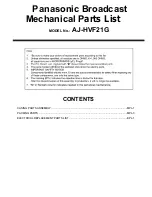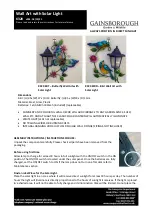
Triangulation Laser Sensors, RF605 Series
RF605 [Revision 2.0] 10th January 2011 valid for sensors with serial numbers 11000 and higher
10
10.5. Line AL operation mode
This line can work in one of the four modes defined by the configuration parame-
ter value:
mode 1: indication of run-out beyond the range ("0"
– object is beyond the
range (beyond the selected window in the range), "1"
– object is within the
range (within the selected window in the range);
mode 2: mutual synchronization of two or more sensors;
mode 3: hardware zero-set line;
mode 4: hardware laser switch OFF/ONN
In the
"Indication of run-out beyond the range"
mode, logical ―1‖ occurs on the
AL line if an object under control is located within the working range of the sensor (within
the selected window in the range), and logical "0" occurs if the object is absent in the
working range (within the selected window).
For example,
in such mode this line can be
used for controlling an actuator (a relay) which is activated when the object is present
(absent) within the selected range (Fig.4.1).
The
"Mutual synchronization
‖
mode
makes it possible to synchronize measure-
ment times of two and more sensors. It is convenient to use this mode to control one ob-
ject with several sensors, e.g., in the measurement of thickness. On the hardware level,
synchronization of the sensor is effected by combining AL lines (Fig.4.2.).
In the
"Hardware zero-set"
mode connection AL input to the ground potential sets
beginning of coordinates into current point (Fig.4.3.).
In the
"Hardware laser switch OFF/ONN'
mode connection AL input to the
ground potential switch laser ON/OFF (Fig.4.3)
Out of the range indication
Mutual synchronization
Hardware zero-set/
Hardware laser ON/OFF
+24VDC
AL
RF60
5
100
mA
m
ax
+24VDC
AL
RF
6
0
5
RF
6
0
5
AL
IN
IN
RF6
0
5
AL
Figure 4.1
Figure 4.2
Figure 4.3
10.6. Time lock of the result
If the sensor does not find out object or if the authentic result cannot be received,
zero value is transferred. The given parameter sets time during which is transferred the
last authentic result instead of zero value.
10.7. Method of results averaging
This parameter defines one of the two methods of averaging of measurement re-
sults implemented directly in the sensor:
Averaging over a number of results
Time averaging
When averaging over a number of results is selected, sliding average is calcu-
lated.
When time averaging is selected, the results obtained are averaged over the
time interval chosen.
Содержание RF603 Series
Страница 1: ......











































